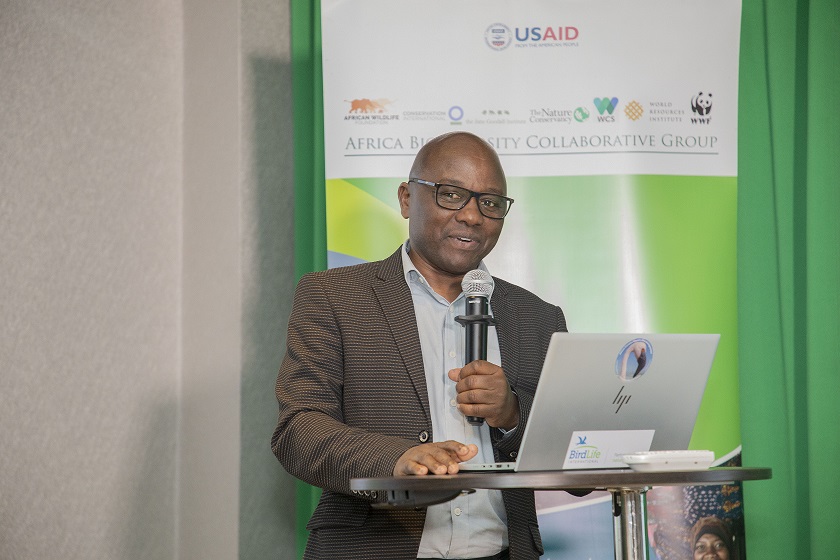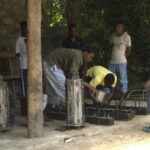
.By Njeri Murigi – healthreporter3@gmail.com
Kihansi spray toad was discovered in 1996 in Tanzania in a five acre micro-habitat created by the spray of nearby waterfalls in the Kihansi Gorge.
In 1999, the construction of a hydroelectric dam in the gorge dramatically changed the Kihansi spray toad’s habitat. By 2009 the toad was declared extinct in the wild by the International Union for Conservation of Nature (IUCN).
The World Bank which helped finance the Tanzanian hydroelectric dam is considering loaning Tanzania $6,000,000 to help it start a breeding programme to bring back this species.
This is what will happen in Kenya if the country continues to expand its energy infrastructure without minding the impact these developments have on birds.
“We have a big challenge in Kenya. We don’t know how to balance our development demands and biodiversity conservation. Our energy development infrastructure is having significant effects on bird populations and their habitats. We have been losing our birds in big numbers,” said Paul Gacheru, Programme Manager at Nature Kenya.
Speaking during a meeting organized by The Regional Conservation Directors in partnership with Media for Environment, Science, Health and Agriculture (MESHA) in Nairobi, Gacheru said 25 bird species from Kenya listed as threatened species by IUCN were at the ‘top 10 per cent’ of global collision risk.
He said the situation was likely to worsen as Kenya plans to increase the installed electricity capacity to 7,200MW by 2030 from the current 2,200MW with wind and solar increasingly prominent in the new generation mix.
However, few studies have been done to show the impact of these development infrastructures on the bird community. “Careful planning and responsible development will help minimise the negative effects of energy infrastructure on birds and their ecosystems while also advancing sustainable energy solutions to combat climate change,” he said.
One way in which energy development infrastructure is impacting the bird community is habitat destruction due to clearing of land. Collision mortality is the other well-documented impact of energy infrastructure on birds. Birds collide with tall structures such as wind turbines, power lines, communication towers and solar panels. These collisions result in injury or death, particularly for birds of prey, waterfowl and migratory species that fly at high altitudes.
“Disruption of migration is another way birds are affected by these developments. Many bird species undertake long-distance migrations and energy infrastructure can disrupt these journeys. Large-scale energy projects like wind farms obstruct flight paths and migration routes,” said Mr Gacheru.
According to him, Kenya is a biodiverse country with many bird species that are potentially susceptible to energy infrastructure. As a country, we have 67 designated key biodiversity areas, necessitating careful planning for energy infrastructure expansion, especially wind.
Kenya is also part of the Global Bird Migratory Routes. The country sits on the Red Sea-Rift Valley Flyway. This is the second largest flyway for migratory birds in the world. The country has approximately 300 migratory bird species and many other residents.
“Our development impact is not only affecting resident species but also the migratory species. Migratory birds face unique challenges because they cross international borders and often rely on specific stopover points during their long journeys,” he added.

According to him, to ensure that energy infrastructure developments do not harm the bird populations, the country needs to adopt the Wind Energy and Biodiversity Strategic Environmental Assessment (SEA) draft. The draft is a useful instrument in policy formulation and implementation that seeks to identify places critical for the survival of bird species that are likely to be affected by wind power.
It also seeks to identify areas of low biodiversity risk for wind power development, propose mitigation measures and other management actions that will align with international good practice.
“We have done the research and found out that 17 per cent of our landscape is sensitive and no wind energy development should go on there if we want to conserve our birds,” said Mr Gacheru.
So far incentives have been provided for more wind farms establishment across the country, mainly along the Rift Valley.
He calls for systematic collection of electrocution and collision data to inform power line design and best practices. The government, Gacheru says also needs to use mapping tools available for planning while filling the existing information gap for sensitivity mapping, besides impacts and mitigation effectiveness.
“It is also essential for developers, governments and conservation organisations to collaborate and start conducting thorough environmental impact assessments before energy projects are approved. Implementing bird-friendly design features such as radar systems to detect bird movements and shut down turbines during migration peaks can also help mitigate the negative impacts of energy development on birds,” he says.
Other suggested solutions include using bird-safe materials and technologies such as avian markers on power lines to reduce collisions, supporting research and monitoring efforts to better understand the specific impacts of energy development on local bird populations. The safe measures and technologies would advise the implementation of proper mitigation measures such as habitat restoration and conservation efforts.
Ken Mwathe from Birdlife International, an organisation that conserves birds, their habitats, and global biodiversity insists on the need to protect birds at all cost because birds are among the most crucial species to the global ecosystem.
“They have value culturally, artistically, philosophically and economically. Beyond that, they play a huge role in preserving our precious ecosystem and as such, all life on this planet. Birds control pests, clean up waste and spread seeds. Approximately 5 per cent of the plants humans use for food or medicine are pollinated by birds.”
Despite their importance, bird population is declining at an alarming rate. According to the latest Birdlife International report released last year, nearly half of the world’s bird species are now in decline with only 6 per cent increasing.
One in eight species (or 1,409 species) are now threatened with extinction. Nearly 3 billion birds are estimated to have been lost since 1970 in North America alone, and a further 600 million in the European Union since 1980, an area that is five times smaller.
Energy infrastructure developments have contributed greatly to this decline. According to Alex Ngari, BirdLife International’s Migratory Birds and Flyways Programme Manager for Africa, millions of birds die from electrocution or collision with poorly deployed energy infrastructure every year. A good example is the long-distance migratory Egyptian Vulture (Neophron Percnopterus), listed by IUCN as globally endangered.
In South Africa where most studies have been conducted on the subject, 2,294 dead birds were counted under a power line in a span of five years up to 2011. Amur Falcon (Falco amurensis), Jackal Buzzard, (Buteo rufofuscus) and Common Kestrel (Falco tinnunculus) have been the most frequently reported raptor fatalities.
“Renewable energy cannot be ‘green’ if the associated infrastructure continues to kill birds and harm other biodiversity. That is why we are calling for adequate integration of biodiversity protection in the energy sector,” Mr Ngari has previously said.








